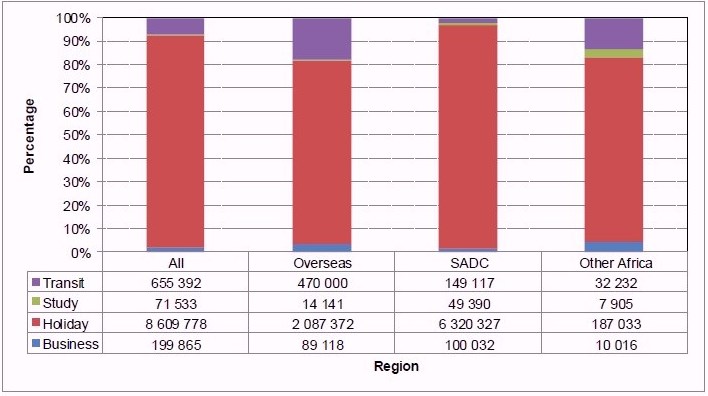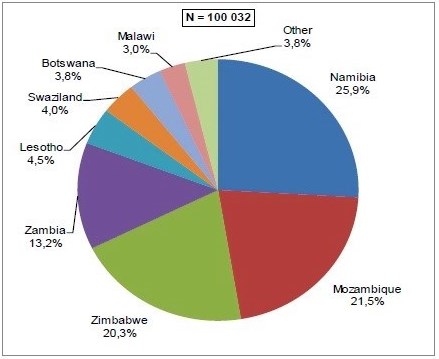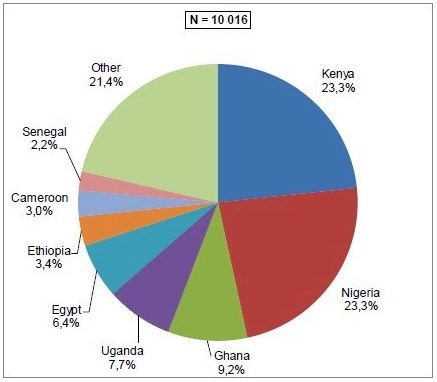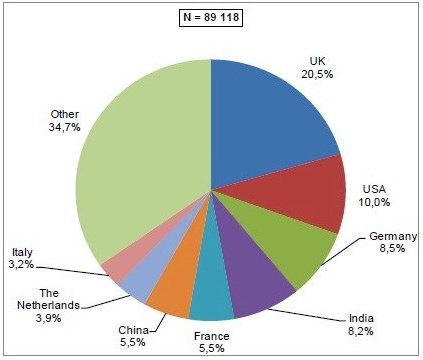News
South Africa: Tourism Report 2013

Background
Administrative records regulating the flow of people across boundaries, specifically border statistics, are an important source of statistical data on temporary population movements in many countries. Generally, countries routinely collect some data from both residents and non-residents who pass through the demarcated air, land and sea ports on arrival in and departing from the country. The method, the kind of collected data, the quality of data and the dissemination and availability of processed data differ quite widely among countries since there is no international standardised template for the recording of information on travellers. Besides the impact of the level of infrastructure development, the national differences are largely shaped by the immigration policies and regulations of individual countries.
Data collection methods may be electronic, manual or both. Travel documents could be scanned and/or travellers are expected to complete an arrival and departure form/card. The level of documentation and the information collected from travellers are often influenced by the citizenship/nationality of the travel document and the purpose of entry.
Data obtained from foreigners or non-residents can be used to categorise them into visitors and non-visitors. Usually, the data given on the form regarding purpose of visit and/or length of stay is also used to categorise travellers into visitors and migrants. In countries that do not use cards/forms, data on type of visa/permit can also be used for the categorisation. In addition, there are countries that issue special cards for registered immigrants that they could use to cross in and out of the country of residence. Thus the information from the visa, permit and the card/form are used to classify non-visitors into migratory categories such as short-term and long-term migrants; temporary migrants; permanent migrants; labour migrants, asylum seekers, students, etc. according to a country’s specifications.
Because border statistics are derived from arrival data they could be the most suitable data source for the direct measurement of the flow of immigrants (UN, 2011). The data are routinely collected as travellers pass through the immigration check points at the port of entry so data are available at any given time intervals. It is very crucial to note that unlike data from census or sample surveys that count individual persons, border statistics by their nature, do measure events i.e. movements of persons rather than the physical persons. The simple reason is that the same person can cross the border a number of times during a specified time and his or her information is recorded every time he or she passes through the border.
The management of population movements across South African borders and immigration into South Africa fall under the jurisdiction of the Department of Home Affairs (DHA). The jurisdiction of this responsibility is enshrined in the various immigration acts, amendments, laws and regulations. Currently, with respect to the collection of data on population movements in and out of South Africa, the DHA operates with the Immigration Act 2002 (Act No. 13 of 2002), its amendments and associated regulations. The latest Immigration Regulations came into operation on 26 May 2014. Any changes and amendments in the legislation and regulations affect both the flow of travellers as well as the methods of collecting data and the kind of information collected on travellers.
At the ports of entry/exit, the immigration officers of the DHA collect information on South African residents and foreign travellers arriving into or departing from South Africa. This information is used to produce statistical releases on all travellers, with emphasis on tourists and an annual report aggregating the results of one calendar year.
Percentage distribution of tourists by region and purpose of visit, 2013

Percentage distribution of tourists from SADC countries on business, 2013

Percentage distribution of tourists from ‘other’ African countries on business, 2013

Percentage distribution of tourists from overseas countries on business, 2013


